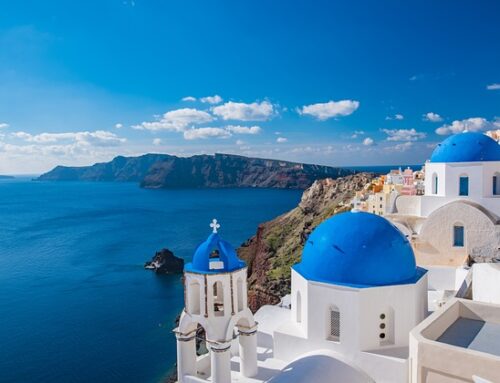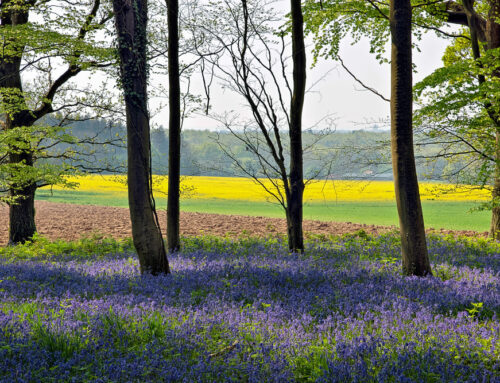Exploring the Hidden Jewish History of Barcelona
Barcelona ‘Call’ing – hidden Jewish history next to Las Ramblas
The history of Barcelona is closely connected with that of European Jewry and the city’s Call (Catalan for Jewish district) is well preserved. So for anyone interested in tracing the path of their ancestors, or equally those simply interested in history, Barcelona and Catalonia have much to offer.
First Some Fascinating History
Barcelona was founded in about 15 B.C during the later stages of the Roman Empire, as a castrum (military camp), an outpost guarding the Roman Via Augusta, a Roman road which connected silver mines in Andalusia with Rome. There is still a street in Barcelona called Via Augusta, and it follows the exact route of the Roman road, albeit with five lanes of traffic.
Initially Barcelona was a small settlement, eclipsed by Roman Tarraco (modern day Tarragona) to the south. Tarragona still features a wonderful Roman amphitheatre and can be visited as a day trip from Barcelona.
Few written records of the early city remain. But a recent bar renovation in the Born district unearthed an amazing treasure, the remains of a mikveh (a bath used in Jewish ceremonies for ritual immersion) so there is evidence of very early settlement.
How early is difficult to say, the precise start date of Jewish habitation in Spain is not known. In a letter from St. Paul to the Romans dated A.D. 54, he stated his interest in visiting the Iberian peninsula to preach, which would seem to confirm the presence of organized Jewish communities, given the fact that Christianity was still at that time a small sect struggling to gain a foothold among Jews and Jewish proselytes (1st century converts to Judaism).
Spain was conquered by North African Muslims in the 8th century, creating the architectural wonders of Sevilla, Cordoba and Granada, all sites that must be seen. Catalonia was briefly under Muslim control, and then became the ‘Hispanic March`, a frontier between Muslim and Christian Spain. The Jewish community of Barcelona and Catalonia prospered, because unlike their Christian neighbours they were able to travel and trade freely between Muslim and Christian Spain.
During medieval times this was a thriving Jewish community, the heyday of Jewish Barcelona was the middle ages, and it is largely from this time that today’s Call dates. Sadly, Spain’s entire Jewish and Muslim communities faced the ultimatum of ‘leave or convert’ during the late 15th century, ending centuries of productive and peaceful cohabitation. While a few Sephardim returned at the start of the 20th century, Barcelona today has a relatively small Jewish community.
What Can Be Seen Today
The centre of Jewish Barcelona was found in the Old town, next to the Cathedral La Seu, established in 243 A.D.
Here the Jews of Barcelona lived in the narrow streets of the Call between the streets of l’Arc de Sant Ramon, Call, Bisbe and Sant Sever. Entering into this area is like entering the old Jewish quarter of many European cities, there is a sense of apartness and an immediately noticeable narrowing of streets. It seems hard to believe that the world famous Ramblas is just a stones throw way
Today you can still visit the Sinagoga Mayor (main Synagogue). Built at some time during the fifth century, a new synagogue was later built on top in the fourteenth century. Don’t be misled by its diminutive size, this is perhaps the oldest synagogue in Europe. It is thought the building was originally freestanding. What is certain is that the façade is oriented towards Jerusalem.
Thanks to surviving documentation, we know that in the second half of the 14th century the main gateway to the call was at the beginning the modern day Calle Sant Domènec (then known as Butchers Street), which at that time was the main artery of the Call. Just opposite the entrance was the communities bakery, and just inside it was found the kosher butchers. In today’s Calle de la Fruita was a fishmonger, and on Calle Sant Honorat (then known as Fountain Street) was the communities well. The picture that emerges is one of a completely self sufficient community.
The Jewish cemetery was located out town, in the foothill of Montjuïc. This means mountain of the Jews in Catalan, though some say the name is derived from the Latin Mons Jove – the mountain of Jupiter.
If you are visiting Barcelona and want to see the Call, there is not much accommodation available in the Call itself, mainly due to the narrow buildings and confined space that still pervades. The surrounding old town is a better bet, try feelathomeinbarcelona.com for an apartment in the old town right behind the Cathedral, only 1 minutes walk from the Call.
Another site of interest in Catalonia is Girona, which also boasts an amazingly intact Call, and also has a long and interesting Jewish history, and was home to Nachmanides. Girona can be reached from Barcelona in one and a quarter hours and makes a fascinating day trip.
***************************************************
About The Author: This post was shared by Seth Nichols
***************************************************






